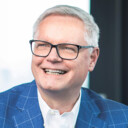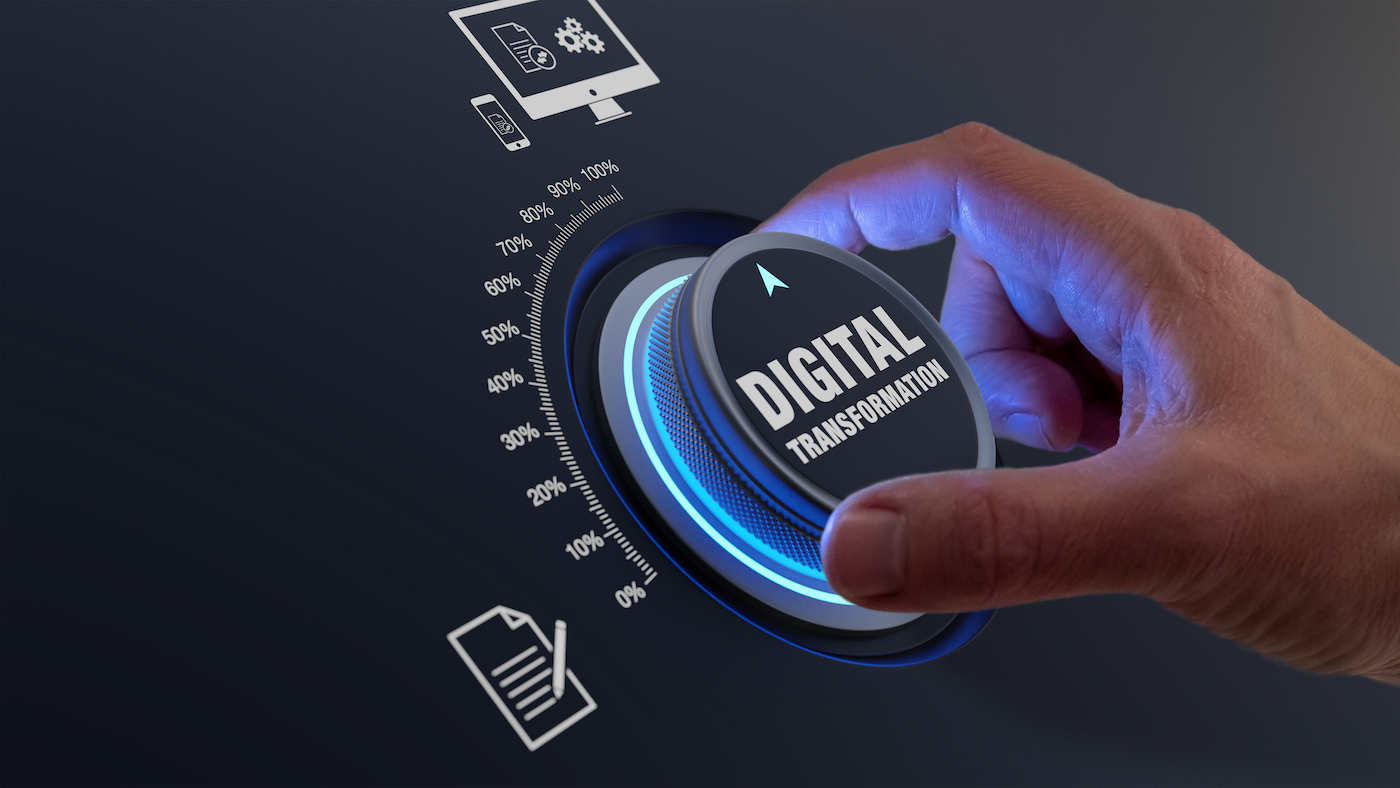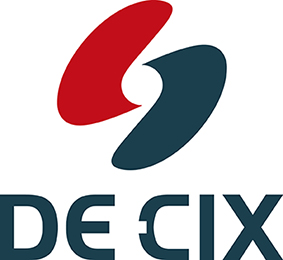Decentralization and the Boost to Digitalization
Donald Badoux from Data Center Group in conversation with Dr. Thomas King at DE-CIX on the importance of decentralized infrastructure for modern applications.

© Photoenthusiast82 | istockphoto.com
Donald Badoux: The Covid 19 pandemic caused a boost in digitalization and an increase in data traffic. Can you specify these effects?
Thomas King: In general, we register annual traffic growth – which is how much data we transport for our customers – of 20 to 30%. During the first lockdown in March 2020, we saw that amount of growth within a single week, due to people working from home, video conferencing, and digital home schooling. Many people were streaming videos via Netflix, YouTube, etc, or playing online games in their free time. As we were all no longer able to pursue our usual activities, everything shifted to the digital level. As a result, we are now observing a sustained increase in demand for digital solutions, and thus, the need for interconnection.
Badoux: What course is this trend taking? Is this digitalization boost slowing down again or do you expect the demand to increase further?
King: Our observations don’t show a decreasing tendency – quite the opposite. Of course, Covid-19 accelerated this development, but many developments are likely to stay. Grandparents now know how to make video calls, so video calls instead of telephone calls have become the new normal. Society has become even more open-minded to digital services and more and more people are willing to use them. Therefore, at the same time, traffic volumes and the need for low latency have also increased considerably.
Badoux: Can you give a short explanation of what latency means and why low latency is that important for digital applications?
King: I have a classic example: Anyone who has ever watched Netflix, YouTube or any other video streaming provider knows the spinning pinwheel that sometimes appears while the video is loading. This is a practical example for latency which exists in every application. It describes the time that it takes for data to get from where it's being generated or processed to where it's being consumed or executed. For example, when you press a button in an application or on a web page to perform a certain action, latency describes the time it takes to get the result.
Thirty years ago, when the Internet was built up, it wasn't so crucial how long data took to flow through the network. People were happy that it was even possible to call up a website from the USA in the first place. But in the meantime, our requirements have grown considerably, and low latency is becoming increasingly important, especially for interactive applications. This can be reduced by bringing data and users closer together. On the one hand, physically, for example by bringing the data centers closer to the users. On the other hand, the network connections – which means the cables used to send the data – must also have short paths. And that's why it makes sense to set up additional Internet Exchanges in certain locations.
Badoux: As of the end of 2022, there will be just such a new DE-CIX exchange in Leipzig (read the DCG reference report on the new envia TEL data center at the future DE-CIX location in Leipzig here).
Why is it necessary to have this location and are there already others in the pipeline?
King: Yes, further locations are planned. Last year, four new locations went into operation worldwide and another seven were announced. These are implemented either together with partners – as in the case of Leipzig with the telecommunications provider envia TEL, among others – or on our own. In 2022, further sites will be opened – potentially even more than ten. This is necessary due to increasing customer demand and advancing digitalization.
To give an example, applications such as video cloud streaming, virtual reality or autonomous driving must move even closer to the customer: this means that edge computing is needed. That's why Frankfurt cannot be the only exchange. Instead, everything needs to be decentralized – as in the case of Leipzig – in order to keep latencies correspondingly low. Accordingly, there is an increased demand for the geographical distribution of data centers and thus also for interconnection.
Badoux: This means the tendency is toward decentralized growth and thus beyond metropolitan areas such as Hamburg and Frankfurt?
King: Yes, the examples of Leipzig or also a new location in the Ruhr region show clearly that the tendency is towards decentralization. We set the Ruhr-CIX up completely remotely in March 2021, during the Covid-19 pandemic. That was also a new experience for us, that this is possible without our technicians being on site. We solved this with video calls, extensive documentation and Remote Hands1. It was exciting to see that you can adapt so quickly and be efficient. In addition, it's better for the climate because there's no longer a need for so many staff to travel, only the technology is sent. This may not be so important for a new location in the Ruhr region, but it is more important for an international deployment, such as the one we had in Southeast Asia in 2021 and the one we are currently carrying out in Northern Europe.
Badoux: Will this development have lasting effects on the processes in your company?
King: Absolutely! There is no need to fly to the setup of all the sites that we are doing now. In the past, a separate team was sent there, and we set up everything ourselves. Now we do it almost exclusively with Remote Hands or Smart Hands2 on site. There are a few very minor exceptions, for example when we take over existing exchanges and need to carry out a migration. This is a bit more complicated, and we then must be on site – but nowhere near the number of people we used to have. We then also make greater use of local resources.
Badoux: Are there also efforts to make this growth ecologically sustainable? Are there specific requirements from DE-CIX?
King: We have sustainability on our agenda, and it is encouraging that data center operators are already very active here, as many of them are already using green power. In my view, this is also the essential part that we can contribute, because the power consumption in data centers is considerable. We are committed to ensuring that – wherever possible – the electricity is green. But it must be said honestly that not all data centers in all regions where we are active offer that. And yet we are observing a change in the industry, and we are supporting that by actively requesting green power.
Badoux: That is then an investment by the data center operator. Do you also see other developments where the end customer must invest, such as in more efficient power consumption?
King: Yes, that is correct. We are also actively investing here, for example by replacing old hardware that is still functioning but consumes a lot more power than new hardware, which is much more efficient – we're talking about savings in power consumption of up to 70 or even 80%. Although the production of the hardware also generates emissions, when calculated over the runtime, the replacement is worthwhile, and we can make an active contribution to the environment with these investments.
Badoux: Please share your assessment as CTO: What do you think about new technologies such as IoT, 5G, etc.? What is behind them and where are these developments leading?
King: I think IoT is very exciting. If you look at all the sensors that are already in use everywhere and what can be evaluated and controlled – whether in the private or industrial environment – it is essential that the digital infrastructure behind it is expanded accordingly. And this trend will make the digital infrastructure even more relevant. But we're still at the beginning of this, and it's going to be a huge development.
5G is very important for edge applications and wherever low latencies are necessary. We are entering new areas of what is possible, and this will open up new fields of application – also in interaction with IoT devices.
Badoux: Dr. King, finally one question about your background: How did you come to the industry and to DE-CIX?
King: When the commercial Internet emerged at the end of the 90s, I already had my own modem and invested my pocket money in dialing into the Internet. At that time, I was still charged by the minute and had to pay my parents for the increased telephone bills. But I was totally fascinated that suddenly there was the possibility to be in contact with different people all over the world thanks to chat applications like ICQ. That never let me go, and therefore I studied and did my doctorate in this field and then applied for a job at DE-CIX. After a few more stops in between, I now have the privilege of working here as Chief Technology Officer.
Badoux: And that's how we got to know each other. A few years ago, we negotiated with one another regarding a location for the exchange in Frankfurt – and we have stayed in contact ever since. The work of DE-CIX is very important for us and our customers. We work on many projects – such as in the case of envia TEL – for local and regional data centers. These are particularly important for educational institutions, clinics, and other critical infrastructures, and that's where DE-CIX is an important partner.
King: This is exactly the development we are seeing: towards decentralization. That's why your projects are relevant and exciting for us.
Badoux: Many thanks for the interview and the assessment.
Figures for DE-CIX:
DE-CIX (German Commercial Internet Exchange) is the world's leading operator of Internet Exchanges with close to 40 locations worldwide. Together, DE-CIX Internet Exchanges form the world's largest neutral interconnection ecosystem with a connected customer capacity of more than 100 terabits.
With a data throughput of more than 11 terabits per second (Tbps) and over 1000 connected networks, DE-CIX in Frankfurt am Main is one of the world’s largest Internet Exchanges.
- 38 exabytes of data were exchanged at DE-CIX Internet Exchanges worldwide in 2021.
- This is an increase of 20 % compared to 2020.
- This is equivalent to the storage capacity of over 300 million smartphones.
- The connection capacities of the exchanges in Germany increased immensely in 2021:
- DE-CIX Frankfurt +12 %
- DE-CIX Düsseldorf +160 %
- DE-CIX Hamburg +40 %
- DE-CIX Munich +130 %
- 11 terabits per second data throughput at peak times at DE-CIX Frankfurt
Footnotes:
- Remote Hands Services include very basic tasks such as rebooting a server, disconnecting and reconnecting cables, and checking and reporting indicators.
- Smart Hands Services are similar to Remote Hands Services, but more complex and require a higher level of IT skills.
As CSO, Donald Badoux is responsible for Sales and Marketing at the Data Center Group. The sales professional has been active in the IT and data center industry for over 35 years. He has a technical background through his studies in Telecommunications at the University of Applied Sciences in Utrecht and many years of sales experience in well-known companies in the industry. In his last positions he was CEO of the hyperscale data center Main DC Offenbach, Director of Sales DACH at datto and Managing Director DACH of the world's largest colocation provider Equinix. Throughout his career, Donald Badoux has been an advocate for and an active shaper of the digitalized world.
Dr. Thomas King has been Chief Technology Officer (CTO) at DE-CIX since 2018. Prior to this, he held the position of Chief Innovation Officer (CIO) at DE-CIX, commencing in 2016. He started his career as Member of Technical Staff at DE-CIX from 2008 to 2010, and after spending time at 1&1 Internet AG and founding the startup audriga, he re-joined DE-CIX as Head of Research & Development in 2014. Thomas King received an M.Sc. degree in Computer Science and Business Administration from the University of Mannheim, Germany in 2004, and a Ph.D. degree at the chair of Computer Networks from the University of Mannheim in 2008.







